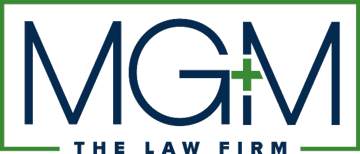On July 23, 2025, MG+M The Law Firm hosted a roundtable, “Contracts & Disputes—Strategies for Minimizing Risk and Managing Claims.” Moderated by Partner David Hatem and featuring a panel of MG+M partners—Melanie Chung-Tims, John Hugo, Jennifer Whelan and Scott Winikow—the session provided practical guidance on how design professionals can reduce legal risk through thoughtful contract drafting and effective dispute resolution strategies.
Drawing on extensive experience representing design professionals in litigation nationwide, the panel discussed how key contractual provisions are interpreted and applied in practice. The conversation emphasized the importance of understanding how contract terms directly influence legal outcomes.
Below are the key takeaways and action items from the session.
- Standard of Care—Avoid contract language like “highest skill” or “first-class design.” The legal standard is reasonable skill and judgment, not perfection.
- Indemnification—Broad indemnity clauses, especially those requiring a duty to defend, increase risk. Tying indemnity to negligence offers more protection.
- Consequential Damages—Mutual waivers limit exposure to high-risk claims like lost profits and reputational damage.
- Subrogation Waivers—These prevent insurers from suing design professionals after paying out claims and reduce litigation risk.
- Limitation of Liability—Effective in managing exposure but only if clearly negotiated, legally compliant and properly structured.
- Dispute Resolution—Mediation and arbitration offer privacy and cost-efficiency. Timing and selection of mediator or arbitrator are important.
Recommended Action Items
- Review and revise contract language to ensure standard of care provisions reflect industry norms and not elevated promises.
- Narrow indemnification clauses to apply only in cases of proven negligence and avoid a duty to defend where possible.
- Include mutual waivers of consequential damages and clearly define exceptions such as gross negligence and third-party claims.
- Confirm insurer approval before agreeing to a waiver of subrogation and request additional insured status where applicable.
- Structure limitation of liability clauses carefully and ensure they are fully negotiated and enforceable under applicable law.
- Include clear dispute resolution steps in contracts and be strategic about when and how to initiate mediation or arbitration.
MG+M’s Design Professionals team offers seasoned trial attorneys with extensive experience defending design professionals against complex professional liability claims, as well as providing counsel on contract disputes and risk management challenges. This roundtable highlighted the critical role that carefully crafted contract provisions play in shaping dispute outcomes and offered practical guidance to help design professionals proactively protect their interests. By thoughtfully negotiating and documenting key contractual terms—including limitation of liability, dispute resolution provisions, and damage waivers—design professionals can reduce their risk exposure and be better positioned to manage claims when they arise.
Stay tuned for upcoming roundtables and additional resources as we continue to support the design community with practical, industry-specific legal guidance.





